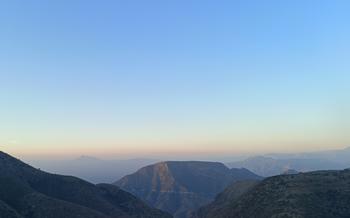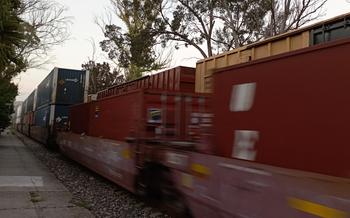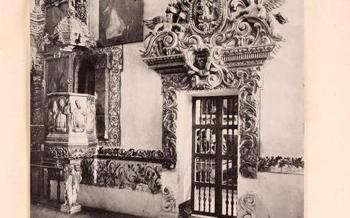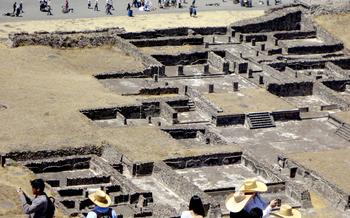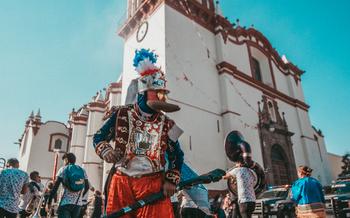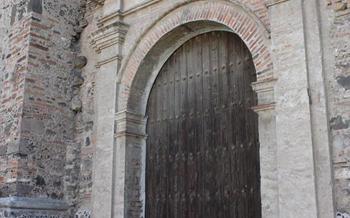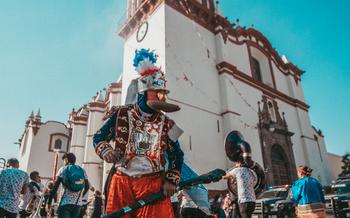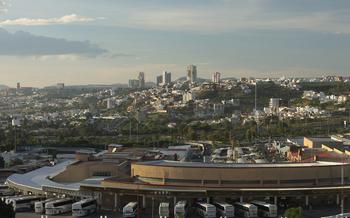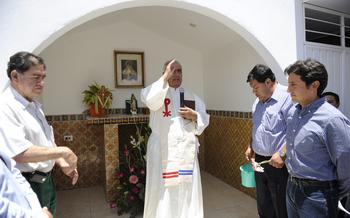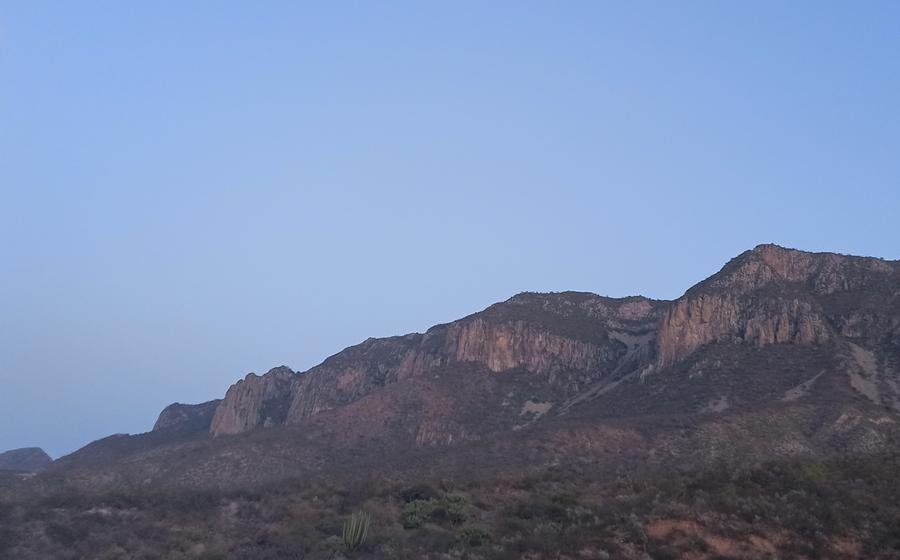
El Cerrito Archaeological Zone
- The Antiquity of El Cerrito Archaeological Zone
- Location and Accessibility
- Historical Overview
- The Main Pyramid
- The Ball Court
- Murals and Petroglyphs
- El Cerrito's Role in the Toltec Civilization
- Excavation and Restoration
- Museum on-Site
- Scenic Views
- Visitor Facilities
- Local Cuisine
- Nearby Attractions
- Insider Tip
The Antiquity of El Cerrito Archaeological Zone
El Cerrito Archaeological Zone stands as a testament to the rich and ancient history of Mexico. This pre-Hispanic settlement dates back to the Classic period (200-900 AD), when it served as a significant ceremonial and political center for the Toltec civilization. Archaeological excavations have revealed a wealth of artifacts, including pottery, figurines, and stone tools, providing valuable insights into the daily life and cultural practices of this ancient society. The site's historical significance is further enhanced by its strategic location along trade routes, making it a hub for cultural exchange and commerce. El Cerrito's enduring legacy as an important archaeological site continues to captivate visitors and scholars alike, offering a glimpse into the complexities of ancient Mesoamerican civilizations.
Location and Accessibility
El Cerrito Archaeological Zone is situated in the municipality of Queretaro, in the central region of Mexico. Its geographical coordinates are 20°37'18"N, 100°23'14"W. The site is conveniently located just 10 kilometers from the city of Queretaro, making it easily accessible for visitors.
To reach El Cerrito, you can take a taxi or a local bus from Queretaro. The journey takes approximately 20 minutes. Once you arrive at the site, there is a well-maintained road leading to the main entrance. Ample parking space is available for visitors who come by car.
Historical Overview
The El Cerrito Archaeological Zone is a testament to the rich and diverse history of the region. It was once home to pre-Hispanic civilizations, including the Otomi and the Chichimeca, who inhabited the area long before the arrival of the Spanish. The site flourished during the Toltec period, which lasted from the 9th to the 12th century AD. During this time, El Cerrito served as a significant religious and political center, with temples, palaces, and other structures constructed to honor the Toltec deities.
After the decline of the Toltec Empire, the site was abandoned and fell into disrepair. It was not until the 20th century that archaeologists began to excavate and restore the ruins, revealing the intricate architecture, murals, and artifacts that had been hidden for centuries. Today, the site is a protected national monument, open to the public for exploration and appreciation.
The Main Pyramid
The main pyramid, also known as the Great Pyramid, is the most prominent structure at El Cerrito. It is believed to have been constructed around the 10th century AD by the Toltec civilization. The pyramid is a massive structure, measuring approximately 25 meters in height and 60 meters in width. It was built using large blocks of stone and has a steep, stepped design with a series of terraces leading to the top. The pyramid's exterior is adorned with intricate carvings and sculptures, depicting various deities and mythical creatures. The main pyramid served as the primary religious and ceremonial center of El Cerrito and was likely used for important rituals and festivals. Its impressive size and architectural features demonstrate the advanced engineering and artistic skills of the Toltec civilization.
The Ball Court
Purpose and significance
The ball court at El Cerrito Archaeological Zone is a significant feature that reveals insights into the cultural and religious practices of the Toltec civilization. The game played on this court, known as ullamaliztli, was not merely a sport but held deep symbolic and ritualistic meanings. It was believed that the outcome of the game had implications for the well-being and prosperity of the community. The court's alignment and design were carefully planned to align with astronomical observations, suggesting its connection to celestial and religious beliefs.
Design and layout
The ball court at El Cerrito is a long and narrow rectangular field, enclosed by high walls on both sides. The walls feature sloped surfaces and stone rings embedded at regular intervals. These rings served as markers for the game and were used to bounce the ball during gameplay. The court's dimensions and acoustics were meticulously engineered to create a unique soundscape, enhancing the atmosphere and intensity of the game.
Ritualistic practices
The game of ullamaliztli was not just a competition but a sacred ritual. It was often played during religious festivals and ceremonies, with the participation of specially trained players. The outcome of the game was believed to have spiritual and political significance, and the winning team was often rewarded with honor and prestige. The game also served as a form of entertainment and spectacle for the community, bringing people together for a shared experience.
Murals and Petroglyphs
El Cerrito Archaeological Zone is renowned for its exquisite murals and petroglyphs, which provide a glimpse into the vibrant artistic traditions of ancient cultures. These artworks are dispersed throughout the site, adorning the walls of temples, altars, and residential structures. The murals showcase a diverse range of subjects, including scenes from daily life, religious ceremonies, and mythological narratives. The petroglyphs, on the other hand, depict intricate geometric patterns, animal figures, and human forms. These artistic creations offer invaluable insights into the beliefs, customs, and artistic sensibilities of the people who once inhabited this ancient city.
The murals and petroglyphs of El Cerrito are not only aesthetically captivating but also hold profound cultural significance. They served as a means of communication, storytelling, and religious expression for the ancient inhabitants. The murals, with their vibrant colors and detailed compositions, likely played a role in religious rituals and ceremonies. The petroglyphs, carved into the rocks with precision and skill, may have served as boundary markers, talismans, or representations of important events.
Preserving these priceless artworks is of utmost importance. The El Cerrito Archaeological Zone has implemented strict conservation measures to protect the murals and petroglyphs from deterioration and vandalism. Visitors are prohibited from touching or damaging the artworks, and ongoing restoration projects aim to preserve their original beauty and integrity for future generations.
El Cerrito's Role in the Toltec Civilization
El Cerrito played a pivotal role in the development and flourishing of the Toltec civilization. It served as a significant political and religious center, where leaders and priests held sway over a vast region. The city's strategic location facilitated trade and commerce, attracting merchants from distant corners of Mesoamerica. El Cerrito's influence extended beyond its physical boundaries, as its cultural and religious practices radiated throughout the region, leaving an enduring mark on Toltec society.
Excavation and Restoration
El Cerrito Archaeological Zone has been subjected to extensive archaeological research and restoration efforts over the years. In the early 20th century, Mexican archaeologists began excavating the site, uncovering numerous structures, artifacts, and burials. These excavations provided valuable insights into the site's history and cultural significance. In the 1970s, a major restoration project was undertaken to preserve and protect the remaining structures. This project involved the consolidation of walls, the reconstruction of certain features, and the installation of signage to educate visitors about the site. Ongoing efforts are being made to maintain and improve the site's infrastructure, ensuring its preservation for future generations.
Museum on-Site
To delve deeper into the history and significance of El Cerrito, a visit to the on-site museum is a must. This modern facility houses an impressive collection of artifacts unearthed during excavations, providing a tangible connection to the past. Visitors can admire intricate pottery, finely carved stone sculptures, and other objects that offer insights into the daily lives, rituals, and artistry of the Toltec people.
Interactive displays and educational panels enhance the museum experience, bringing the ancient civilization to life. Visitors can learn about the Toltec's advanced agricultural practices, their religious beliefs and rituals, and their interactions with neighboring cultures. The museum also features a section dedicated to the ongoing archaeological research and conservation efforts at El Cerrito, providing visitors with a deeper understanding of the site's ongoing significance.
Scenic Views
El Cerrito Archaeological Zone offers breathtaking panoramic vistas that captivate visitors with their natural beauty and historical significance. Ascend to the top of the Main Pyramid to witness awe-inspiring views of the surrounding landscape. The lush vegetation, rolling hills, and distant mountain ranges create a picturesque backdrop that transports you to another time. Capture the essence of this ancient site through photography, preserving memories of your exploration for years to come.
Visitor Facilities
El Cerrito Archaeological Zone is well-equipped to accommodate visitors and enhance their experience. Ample parking is available on-site, ensuring convenient access for those arriving by car. Restrooms are also provided for the convenience of visitors, ensuring a comfortable and hassle-free visit.
To deepen their understanding of the site's history and significance, visitors can take advantage of the guided tours offered by knowledgeable and experienced guides. These tours provide insightful commentary on the various structures, artifacts, and cultural practices associated with El Cerrito. Visitors can choose from a variety of tour options to suit their interests and time constraints.
Local Cuisine
Queretaro, and especially the area surrounding El Cerrito, offers a rich and varied culinary experience. Visitors can indulge in traditional Mexican dishes prepared with fresh, local ingredients. One must-try is the enchiladas queretanas, a unique take on the classic dish, featuring a flavorful filling of cheese, potatoes, and guajillo chili sauce.
Barbacoa de borrego, a slow-cooked lamb dish, is another local specialty, often served with fresh tortillas and a variety of salsas. For a taste of pre-Hispanic cuisine, try escamoles, a delicacy made from ant eggs, sautéed with butter, garlic, and onions.
Local markets, such as the Mercado de La Cruz, are a great place to sample a variety of traditional dishes and purchase fresh produce, spices, and other culinary treasures.
Nearby Attractions
In addition to El Cerrito Archaeological Zone, Queretaro offers a wealth of nearby attractions that are sure to enrich your travel experience. History buffs will delight in exploring the colonial towns of Bernal and Cadereyta, both within a short driving distance. Bernal boasts the third-largest monolith in the world, Peña de Bernal, while Cadereyta is renowned for its 18th-century Franciscan missions and aqueduct.
Nature enthusiasts can escape to the nearby Sierra Gorda Biosphere Reserve, a UNESCO World Heritage Site. This breathtaking natural wonder encompasses lush forests, cascading waterfalls, and an abundance of wildlife. The reserve offers hiking trails, camping facilities, and opportunities for adventure activities such as zip-lining and mountain biking.
For a unique cultural experience, visit the nearby town of Tequisquiapan, known for its wine production and charming cobblestone streets. Sample local vintages at one of the many wineries in the area, or simply soak in the town's tranquil ambiance.
Insider Tip
Best time to visit
El Cerrito Archaeological Zone is open year-round, but the best time to visit is during the dry season, from November to April. During this time, the weather is pleasant, with warm days and cool nights, making it ideal for exploring the site.
Tips for exploring the site
Be sure to wear comfortable shoes, as there is a lot of walking involved. Bring a hat and sunscreen to protect yourself from the sun, and a water bottle to stay hydrated. It's also a good idea to bring a camera to capture the stunning views and ancient ruins.
Local festivals and events
If you happen to be in the area during one of the many local festivals or events, be sure to check them out. These events offer a great opportunity to experience the vibrant culture of Queretaro and learn more about its history and traditions.
